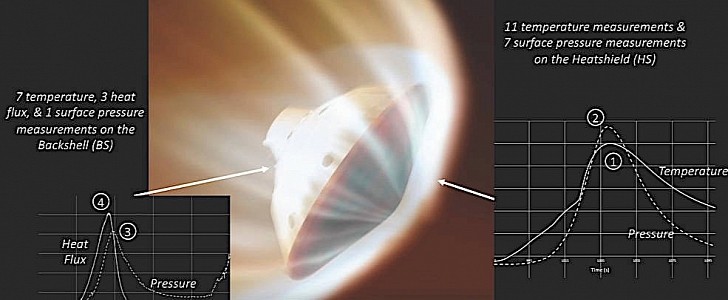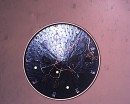The Perseverance rover touched down on Mars in February, and we already get a sense of how complex its upcoming missions will be. But the machine is well equipped for all of them, and so far, everything seems to be working perfectly.
For all intents and purposes, NASA went all in and did not stop at just giving the rover the required tools to accomplish its mission. The agency took advantage of every aspect of the mission to learn more about the neighboring planet, including strapping a wealth of sensors to the descent heat shield.
The array of sensors that monitored Perseverance’s descent is called Mars Entry, Descent, and Landing Instrumentation 2 (MEDLI2). It comprises thermocouples, heat flux sensors, and pressure transducers, but also electronics and hardware for recording the thermal and pressure loads experienced during landing.
Like all other pieces of equipment, this worked beautifully and sent back a wealth of data about the atmospheric entry. It would take NASA scientists about half a year to comb through all that, but the agency already revealed something extraordinary about the landing.
According to the numbers that were already punched in, Perseverance’s heat shield registered a peak temperature of 1,830 degrees Fahrenheit (1,000 degrees Celsius). Since the sensors were not outside the shield, NASA estimates the heat shield's outer temperature was about 2,550 degrees Fahrenheit (1,400 degrees Celsius).
Scientists plan to use the numbers sent back by MEDLI2 to prepare for the future missions to the Red Planet. Some are in the works for Titan as well.
“The returned data is fascinating. It’s like having a bird’s eye view of what’s happening to the aeroshell as it flies through Martian skies. The MEDLI2 sensor signals are so clear we could immediately pick out interesting phenomenon and crucial events,” said in a statement Todd White, MEDLI2 principal investigator at NASA’s Ames Research Center in California’s Silicon Valley.
The array of sensors that monitored Perseverance’s descent is called Mars Entry, Descent, and Landing Instrumentation 2 (MEDLI2). It comprises thermocouples, heat flux sensors, and pressure transducers, but also electronics and hardware for recording the thermal and pressure loads experienced during landing.
Like all other pieces of equipment, this worked beautifully and sent back a wealth of data about the atmospheric entry. It would take NASA scientists about half a year to comb through all that, but the agency already revealed something extraordinary about the landing.
According to the numbers that were already punched in, Perseverance’s heat shield registered a peak temperature of 1,830 degrees Fahrenheit (1,000 degrees Celsius). Since the sensors were not outside the shield, NASA estimates the heat shield's outer temperature was about 2,550 degrees Fahrenheit (1,400 degrees Celsius).
Scientists plan to use the numbers sent back by MEDLI2 to prepare for the future missions to the Red Planet. Some are in the works for Titan as well.
“The returned data is fascinating. It’s like having a bird’s eye view of what’s happening to the aeroshell as it flies through Martian skies. The MEDLI2 sensor signals are so clear we could immediately pick out interesting phenomenon and crucial events,” said in a statement Todd White, MEDLI2 principal investigator at NASA’s Ames Research Center in California’s Silicon Valley.




